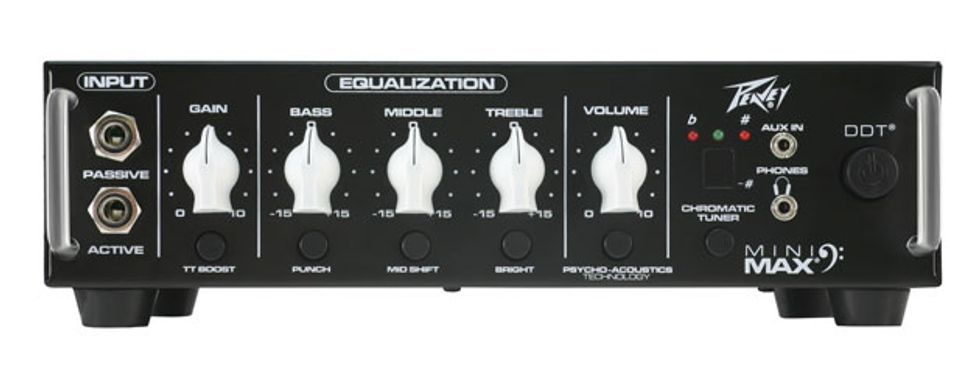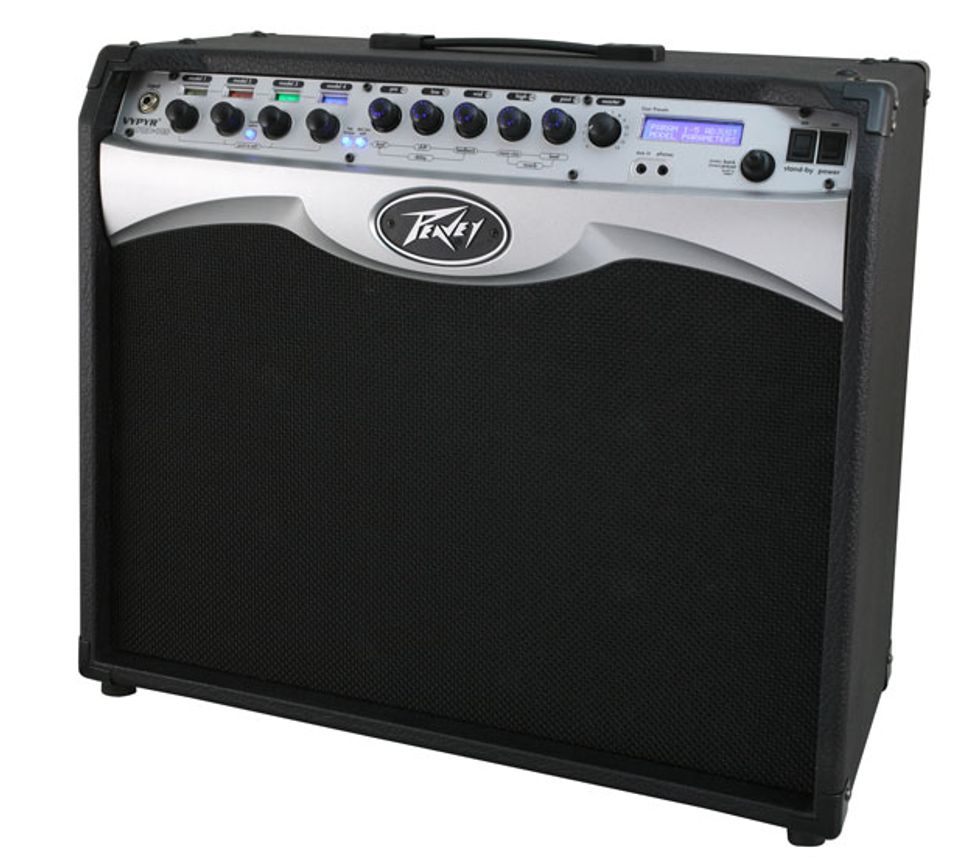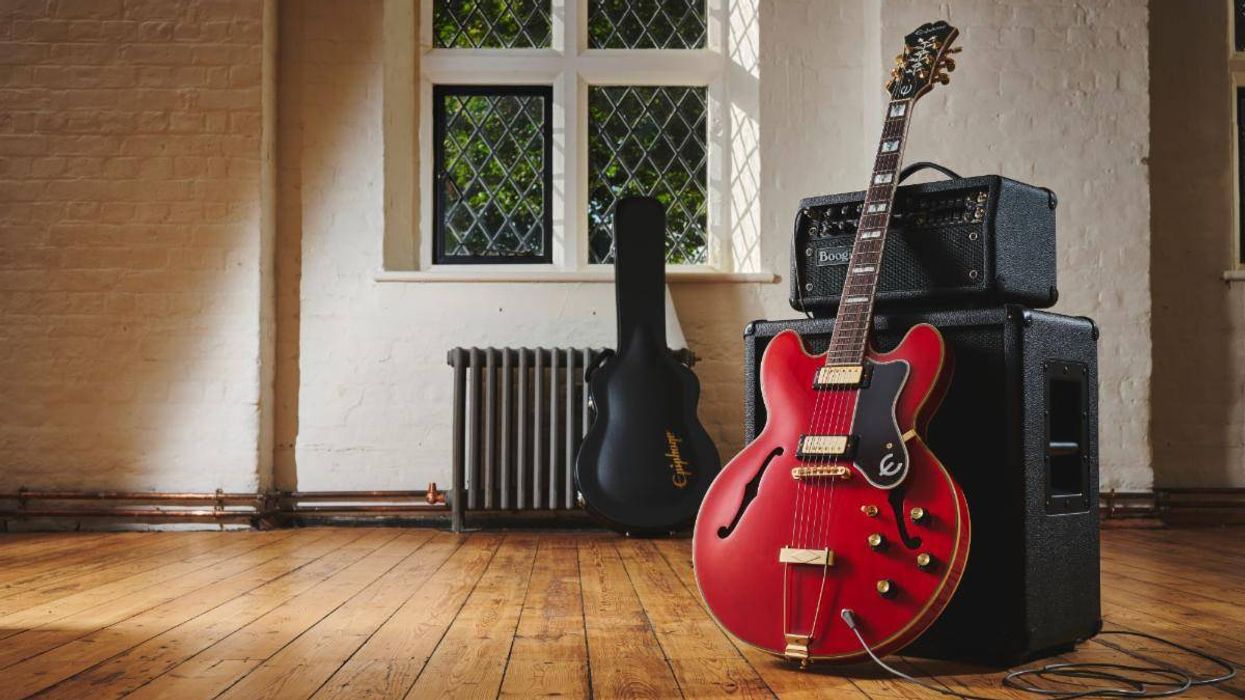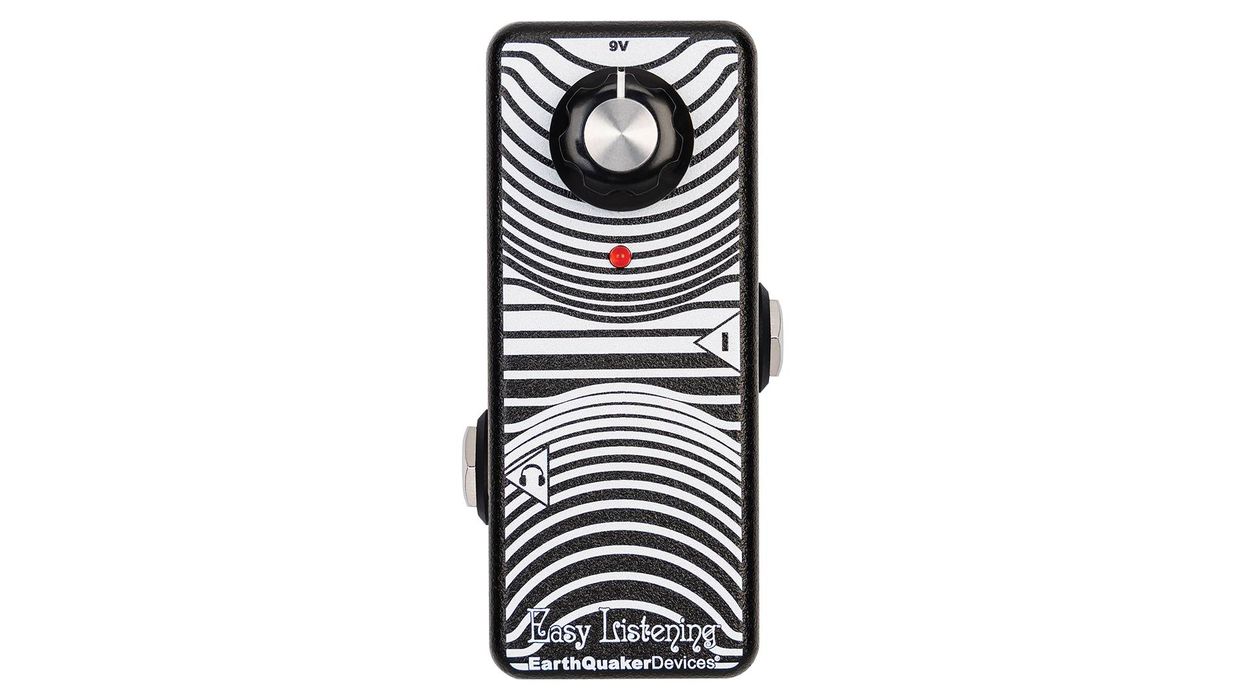Meridian, MS (January 23, 2014) -- From the company that brought you the revolutionary VYPYR and VYPYR VIP series comes the evolution of the most advanced modeling amplifier on the planet. The VYPYR Pro continues the tradition of appropriate technology using 4 stages of patented TransTube analog gain to create the most realistic tube sounding distortion in any modeling amplifier. By using analog distortion, the VYPYR Pro’s digital processor has the amazing ability to offer almost limitless combinations of additional stompboxes, “rack” effects, amplifiers and now even instrument models.
Because of the advanced dual processor design, the VYPYR Pro can run up to four amplifier models in parallel. Using the VYPYR Pro’s unique architecture, the VYPYR is capable of designing a variety of signal path combinations. Four module bays each with their own distinct LCD can be assigned to an amplifier, effect, stompbox, or in the first position an instrument model. The modules can be assigned in any order, allowing the user the ability to create the exact rig they desire, even if they desire to run two or up to four amplifiers in parallel.
World-renowned musical instrument and audio equipment manufacturer Peavey Electronics is proud to unveil the Headliner 1000, a new 1000 Watt rack-mountable bass amplifier head. With matching enclosures, the Headliner 1000 packs huge power and innovative tone features in a lightweight 10 lb. package.
The Peavey Headliner 1000 features a seven-band graphic EQ spaced at optimized frequencies, with each slider providing 15 dB of cut and boost to provide comprehensive tone shaping frequencies optimized for bass guitar. Players can use the graphic EQ in conjunction with the low and high shelving-type tone controls or bypass the graphic EQ entirely.
A built-in optical Compressor with level control and bypass allows players to add just the right amount of compression to the mix. The Crunch feature adds a vintage tube effect that distorts only the high frequencies, preserving the all-important fat low end. The amp also features Bright and Contour switches, an effects loop, master volume and headphone out. The Compressor and Crunch features are footswitch selectable.
The Headliner features a built-in XLR direct interface that routes the signal to the house sound system or recording device, and an active/passive pickup switch that compensates for active instrument inputs. Peavey’s exclusive DDT speaker protection circuitry senses the onset of clipping and responds with slight limiting that allows the amp to retain the tone, headroom and dynamics (bypass included).
Award-winning musical instrument and audio equipment manufacturer Peavey Electronics is proud to release the new MiniMax bass amplifier head. Offering cutting-edge technology in a compact, lightweight package, the MiniMax delivers 400 Watts of powerful, rich low end. With DDT speaker protection and Peavey’s exclusive psychoacoustic low end enhancement that adds bass without overburdening speakers, the MiniMax contains an impressive set of features and is available at a price accessible to today’s working bassist.
The MiniMax is capable of a huge array of tones and is adaptable to any live or studio setting. A 3-band EQ with Punch, Mid-shift and Bright controls provides a multitude of tone-shaping options, while the built-in chromatic tuner allows for easy tuning on the fly. In addition, the MiniMax pre-gain control with TransTube gain boost adds a tube-like crunch to the sound.
Peavey Electronics, one of the industry’s most progressive musical instrument and audio equipment manufacturers, is proud to introduce the groundbreaking ReValver 4 amplifier modeling software. Redesigned from the ground up, this latest version of the award-winning ReValver software contains revolutionary amp modeling capabilities that capture true characteristics of real tube amplifiers.
ReValver is renowned for its industry-leading amp modeling accuracy, which is achieved by modeling an amplifier down to the component level. Now Peavey has updated and improved the modeling engine in ReValver 4, taking amp modeling to a whole new level of realistic toneshaping possibilities. The new ReValver 4 also incorporates a GUI and UX redesign and the ability to run on a Windows tablet, plus other high-level features including GIG mode, ACT (Audio Cloning Technology) and RIR 2 cabinet modeling.
Peavey Electronics, one of the industry’s most technologydriven musical instrument and audio equipment manufacturers, is proud to unveil the new MiniMega 1000 Watt bass amplifier head.
Delivering the classic tone for which Peavey is known, the MiniMega features 1,000 Watts of power and produces incredibly full and rich sound in a compact package. Weighing in at only 8 lbs., the MiniMega is the new go-to amplifier for bassists of any style.
Using technology not found on other bass amps, the MiniMega represents a new level of compact bass amplifier performance. Peavey’s proprietary KOSMOS bass enhancement provides increased bass impact, while the exclusive psychoacoustic low-end enhancement adds bass without overburdening speakers – a testament to Peavey’s technology-driven reliability. The MiniMega also contains other modern features such as built in compression and a 4-band EQ with semi-parametric mids.
Complete with an effects loop, gain control with crunch button, tuner output and more, the MiniMega contains everything necessary for today’s professional bass player. Ideal for use in any live or studio setting, the back panel of the MiniMega has all the connectivity necessary to patch in effects, powered speakers or connect to a sound reinforcement system.
For more information:
Peavey































